Your cart is currently empty!
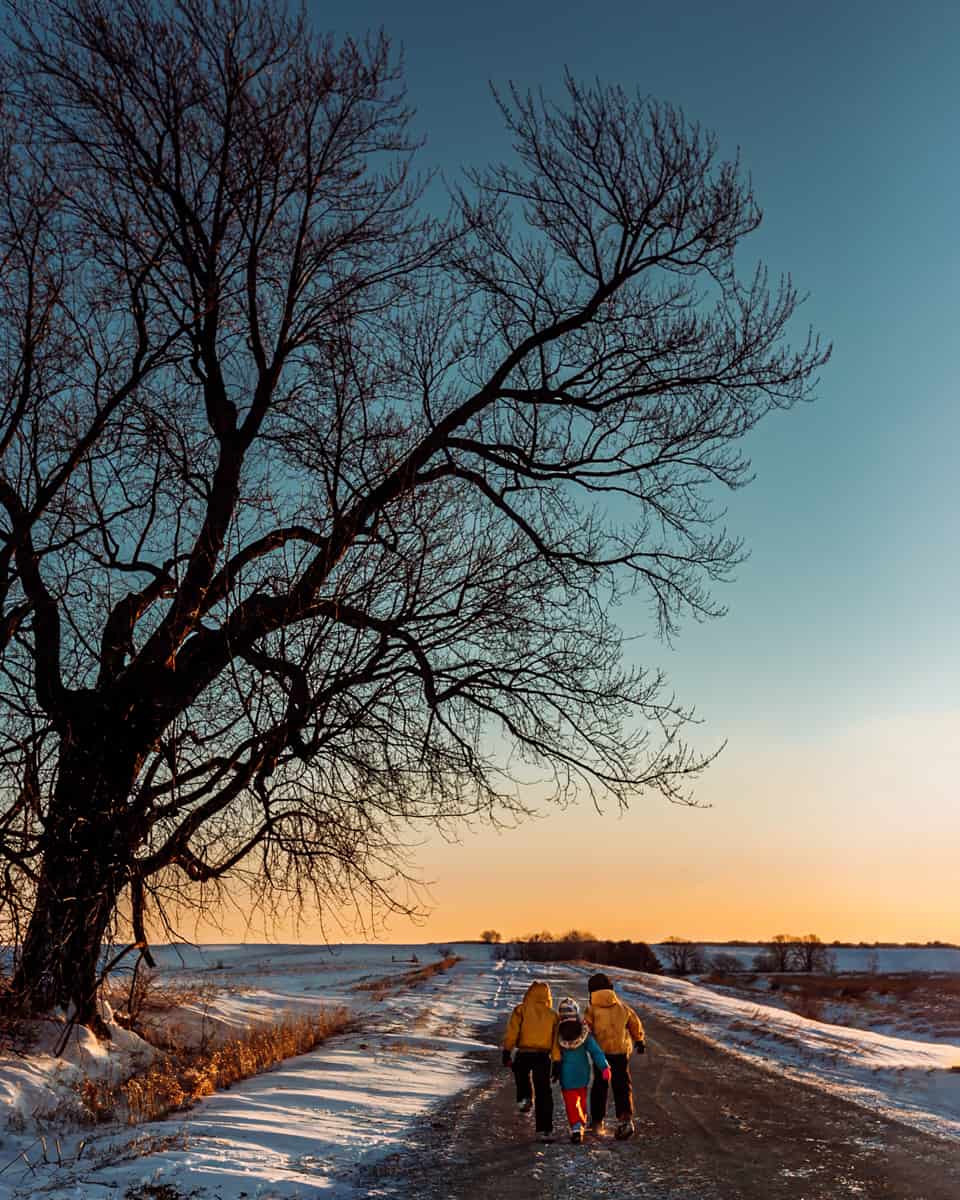
How to Successfully Complete a Seasonal Spot Photography Project
You probably already know by now, but we’re pretty obsessed with photos here at Run Wild My Child. We know a photograph is more than a pretty picture – it’s a snapshot in time. Photography is a way to capture a moment in our children’s lives, a glimpse into the past, a fleeting memory forever preserved. We know how quickly time move, seasons change, and children grow up. Photography is a way to capture those memories so you can pull them out and revisit that moment in time, anytime. Today, photographer and Minnesota mom of three, Angie Mahlke, is here to share tips on how to successfully complete a seasonal spot photography project to capture not only the seasons, but the seasons of childhood.
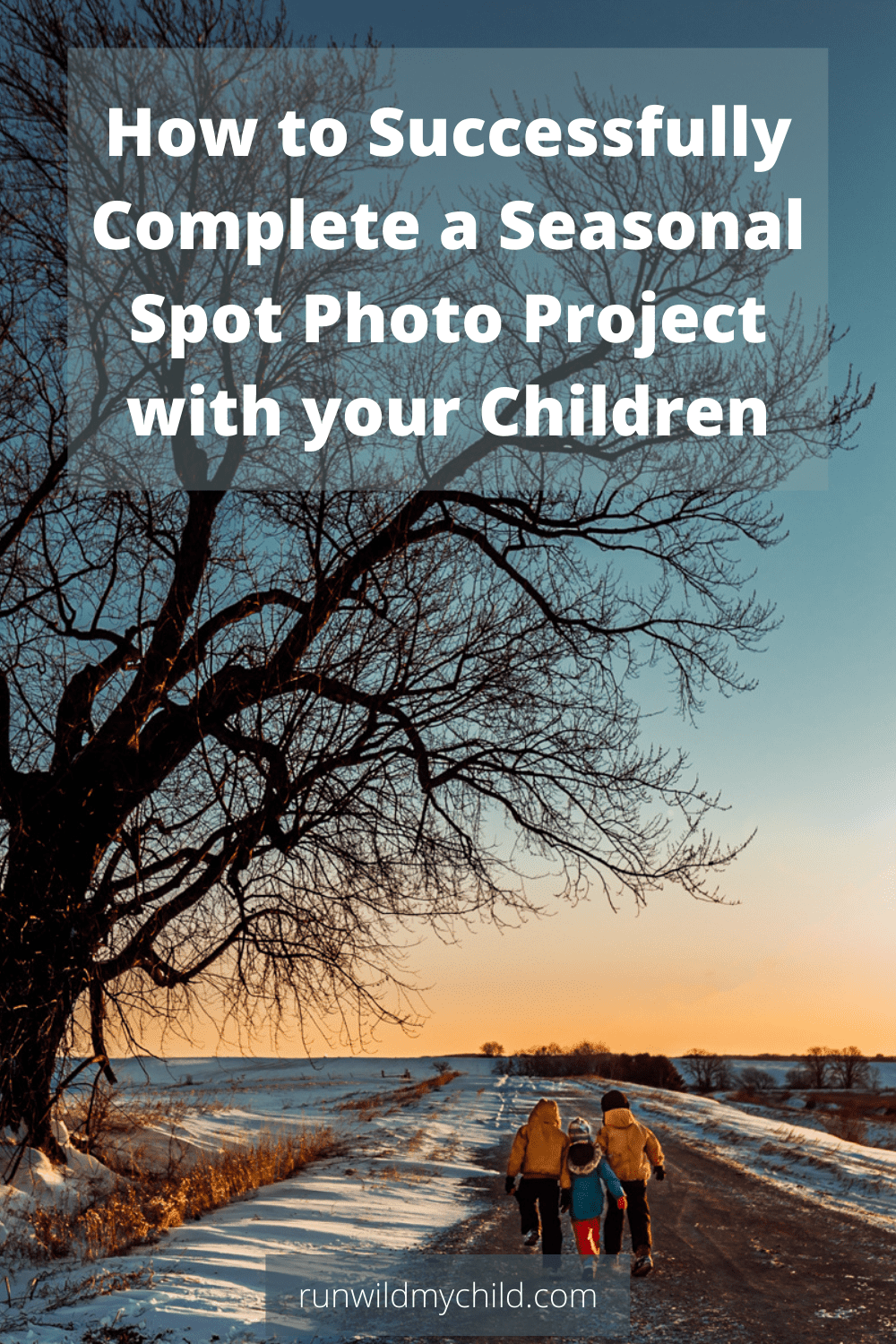
Seasonal spot photography project
Oftentimes, as parents, we put our hobbies aside when our children are small and needy. But, what if you could include your family in your hobbies? For me, that is photography.
Over the years I have challenged myself to merge my creative pastime with spending time with my children. One of the ways is to involve them in my photography projects, get them excited to participate.
My favorite photography project has been our year-long seasonal spot project—where we take a photo a month in the exact same spot to watch the seasons change over the passage of time. 12 photos, all taken in the same place, that show the progress over time. This is a great project to do with kids, so you can see the change in your surroundings, as well as the change in the children as they grow and progress.
Today, I am going to share some of my secrets with you on how to successfully complete this year long photography project with your family.
Get your family involved
The first step to successfully completing a seasonal spot challenge is getting your family on board. If they don’t love the idea and want to be a part of it, you’ll be forced to hear a lot of whining. No one wants to spend time every month convincing your family to participate in something that they don’t want to do. That will zap the fun right away. And the point is to have fun!
Sit down with your family and talk to them about your idea. Explain what a seasonal spot photography project is and what they need to do to participate. Get them to chime in with their ideas, too. If they feel involved, they’re more likely to feel excited about it.
Make sure to lay out the expectations up front. It is a year-long project after all. After the third month, their interest may wane. If they go into it knowing all the details, they’ll be less likely to fight you on it when it’s go-time each month.
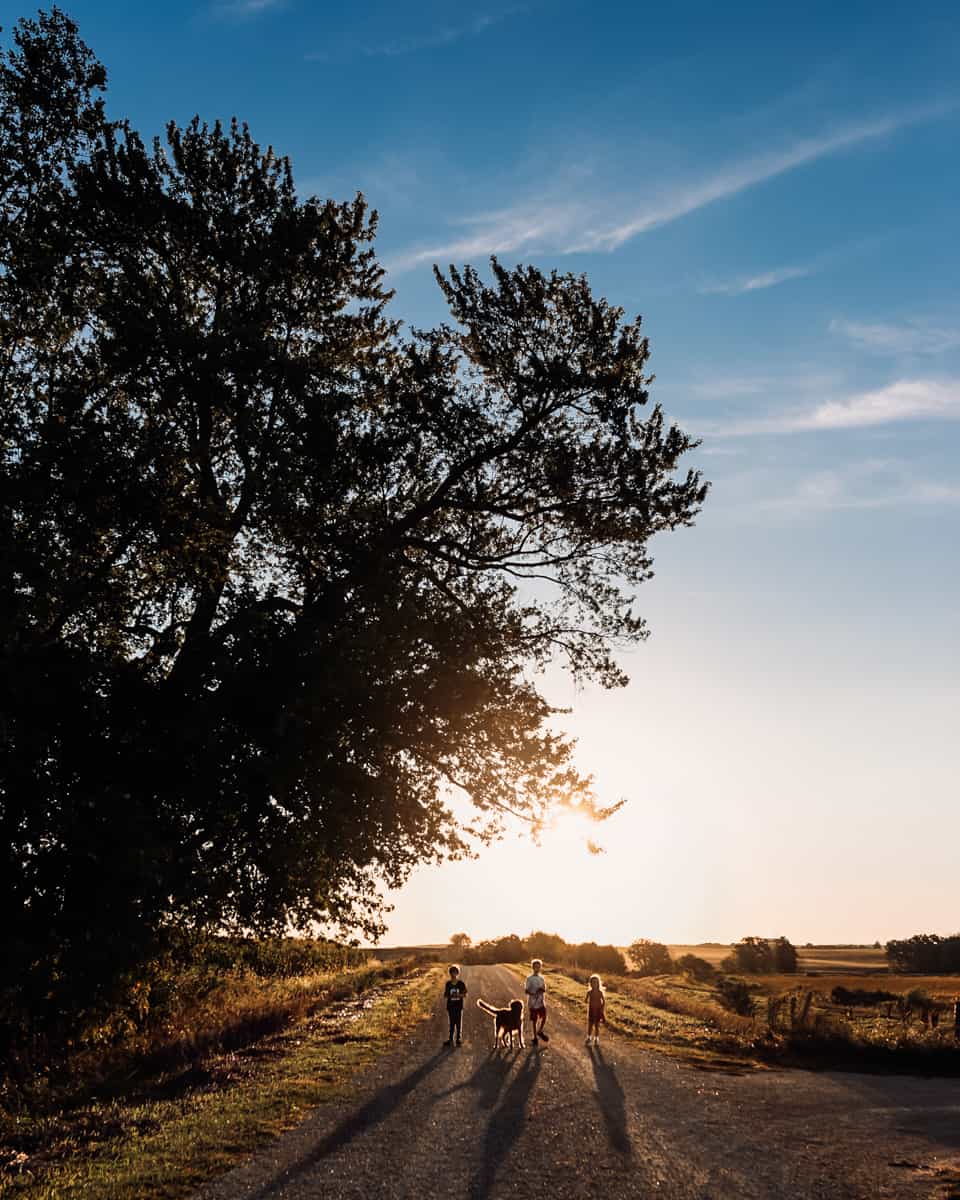

Picking the spot
The next step is picking the right spot for your project. The spot is essential to the project. It is the backdrop to all 12 images. The goal is to show the changing seasons throughout the year. You’ll want to find a spot that is visually interesting all year long, one where the seasonal changes are obvious.
Some things to look for:
- Trees or foliage that change color in the fall
- Interesting light
- Some sort of object or landmark
- Visually interesting setting
The easiest of these things, of course, is the trees or foliage. Scout out an area that you know has beautiful colors in the fall. Watching a tree, for example, start bare in the winter and slowly sprout buds in the spring to a fully green tree in the summer to a golden perfection in fall before slowly becoming bare again is an easy way to show the changing of the seasons.
Light is important, too. If your spot is in a place that doesn’t get much light, your images may appear flat and unappealing. Look for light that is interesting during different times of the day. Watch how the differing light appears in your spot and play with that throughout your project—use it to help tell your story. For example, last year my final image of the project was shot at sunset. A fitting end to the 2021 project.
Look for an area that is visually interesting. Your seasonal spot can have anything interesting—a big tree, a body of water, a wide open field, mountains in the background, a fence, a landmark of some sort. This is important for a few reasons. Firstly, you want your images to be immediately recognizable as your seasonal spot. Having something specific in it is the easiest way. One year I chose a fishing dock. Another year I picked a huge tree. This year I am using an old yellow fence.
Another reason it’s important for the spot to be visually interesting is to stave off boredom. Remember, at the end of this, you will have 12 images. You don’t want them to become redundant and dull. Consider that while scouting for your spot.
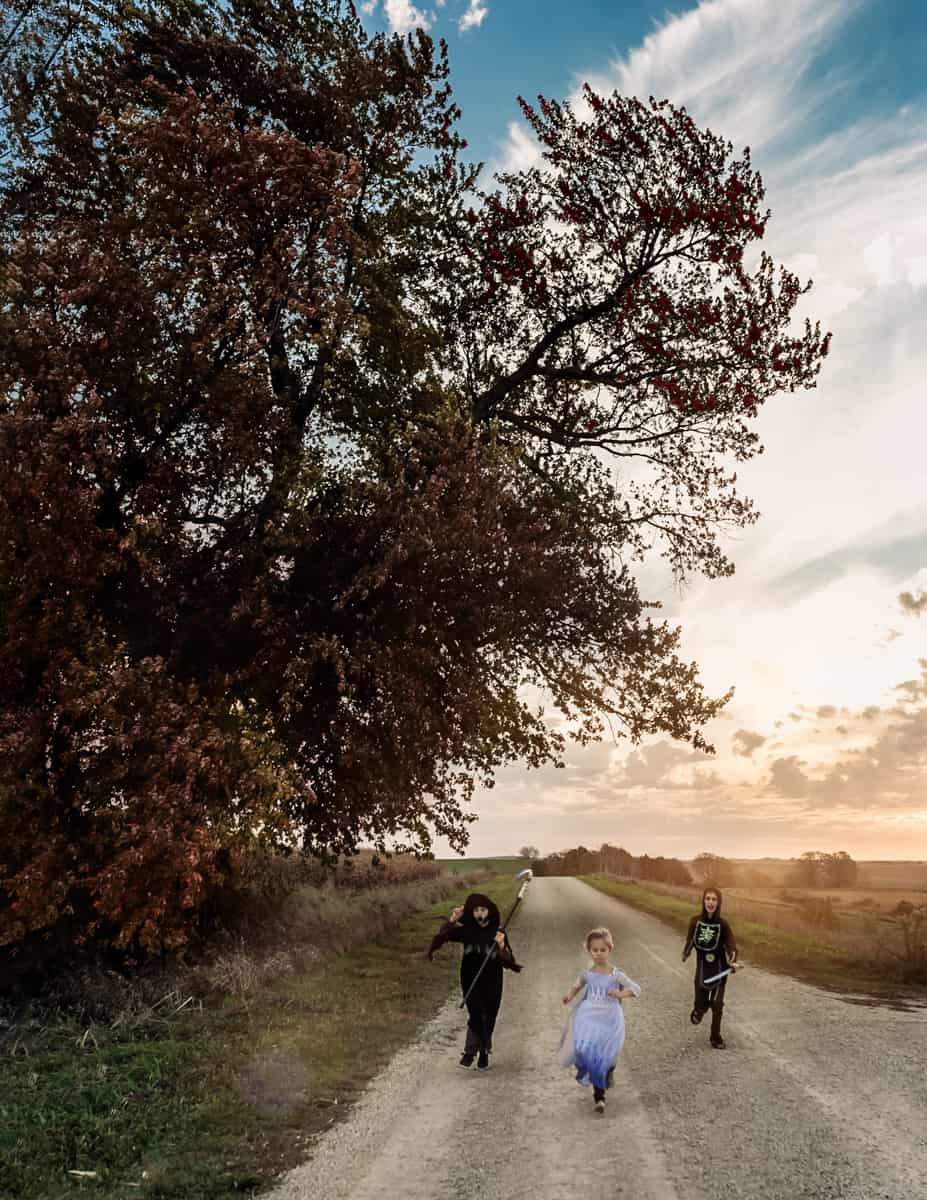
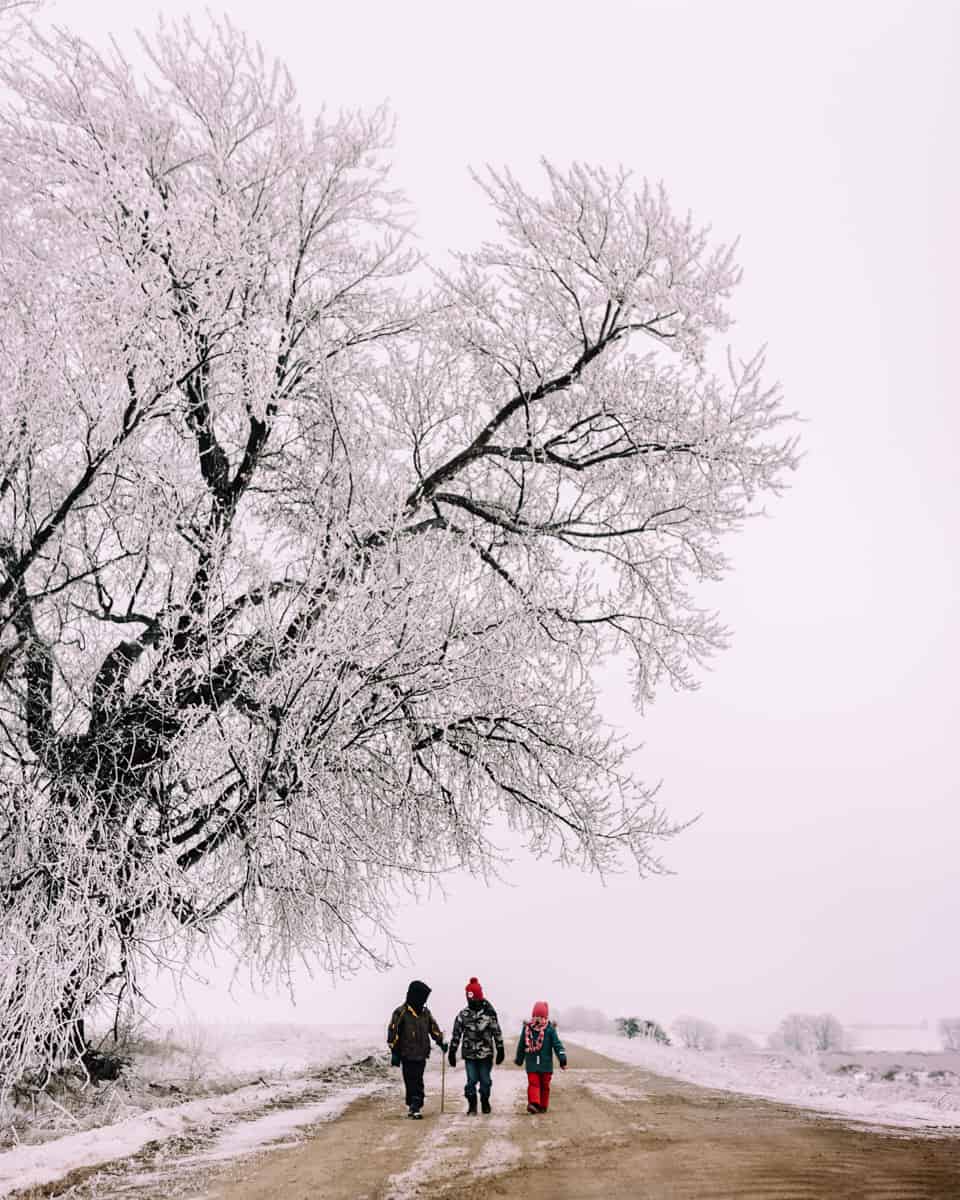
Consider accessibility
The location and accessibility of the spot is also very important. You’ll want to be able to get to it rather easily. I try to keep my spots within 10-15 minutes of my house and make sure they’re easily accessible in all seasons and at all times of day. You don’t want to be trudging through a bunch of snow or tall grass or big hills with your camera gear and family in tow every single month. And you don’t want your spot to be somewhere that closes early or have to drive forever to get to.
The more accessible your spot, the better. You’ll thank yourself come April when you’ve made this as easy on yourself as possible. My very first year I chose a spot in my backyard. It can be that simple.
My kids are already foreshadowing the possibility of mosquitoes come summer in the spot I chose for 2022. The spot is less than 10 minutes from my house, right alongside a road. It is approximately 10 steps from the car. From the time they exit the car, run to the fence, get in place and the camera shutter releases a few dozen times, they will be back in the car in under 15 minutes. The mosquitoes are truly a non-issue. But, going back to our first step I outlined earlier, communication is key. They grumble their concerns. I hear them. Then we discuss ways to overcome them.
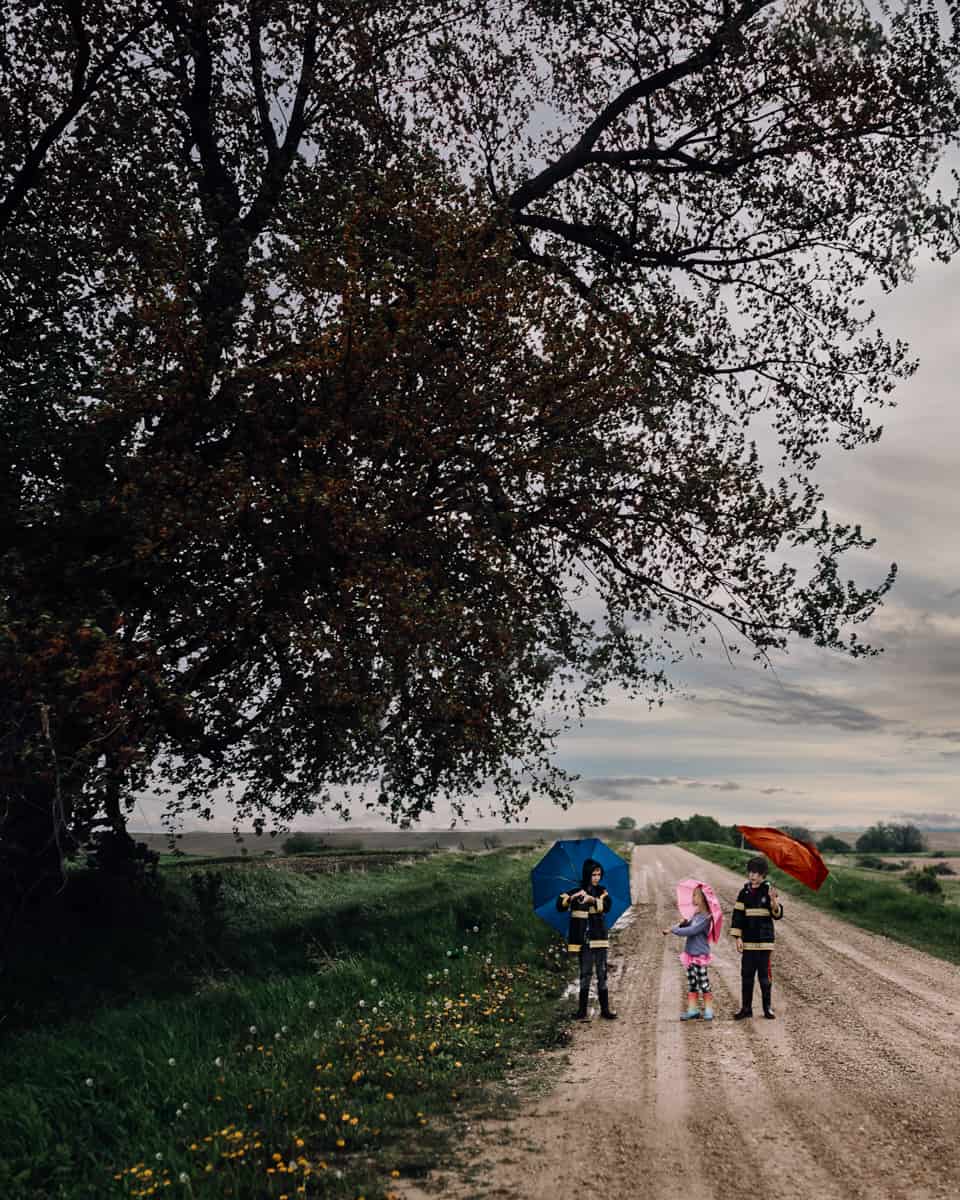
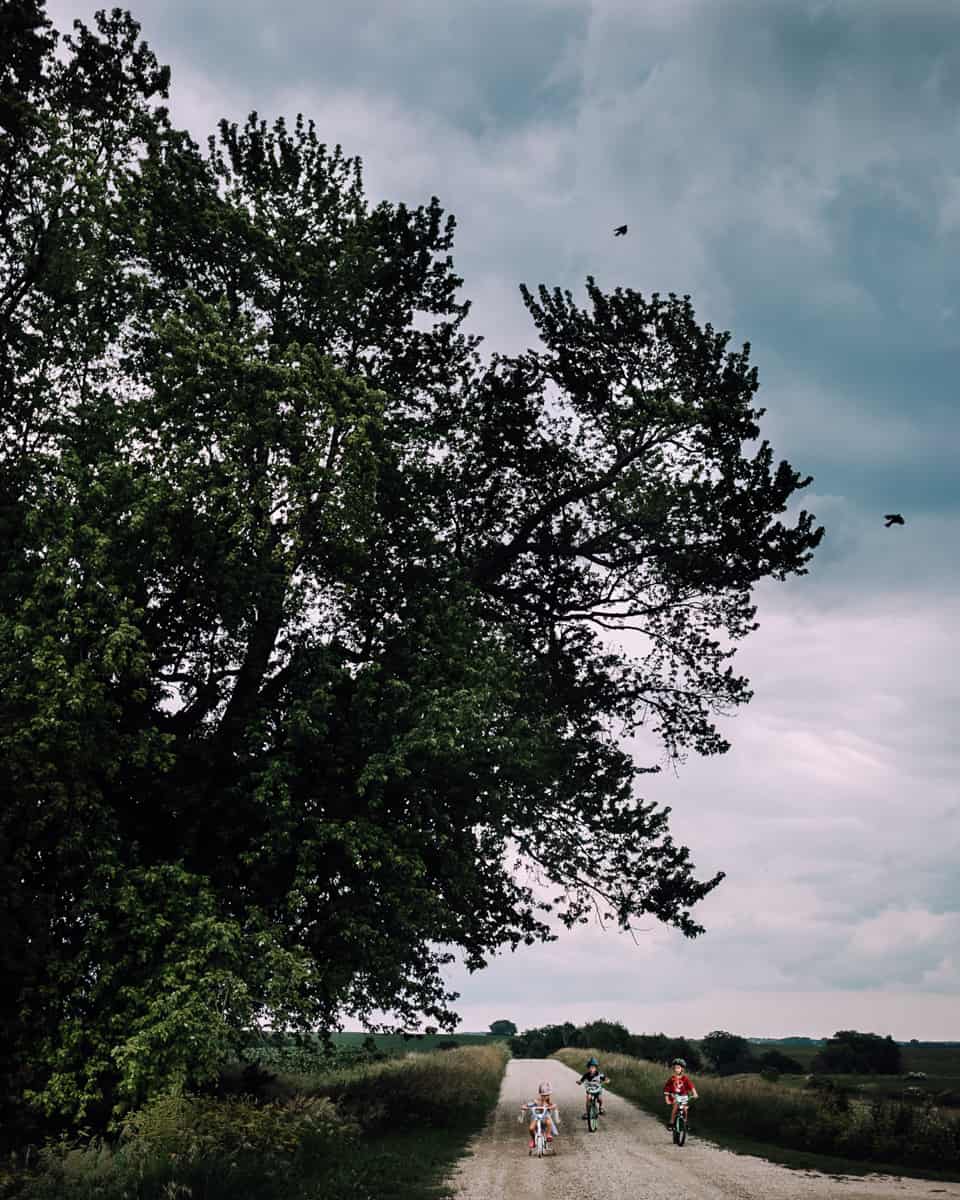
Time to get creative
Now that you’ve found your perfect spot, it’s the fun part of being creative! You can choose to approach the photos on a more documentary level, where you set your children free in the spot and you capture them enjoying the moment. Or you can be more detailed in your planning.
I do a mix of both. Sometimes I like to incorporate the seasons or holidays into the images. A Santa hat or Halloween costumes, for example. Using props is a fun way to spice up the images and add to the storytelling. This is especially important in the months that are similar. Think about how the summer months may look similar in your spot. How can you break that up?
Here are some ideas:
- Seasonal props: umbrella, sleds, bikes (scooters, skateboards), popsicles, hot chocolate, flowers, balloons
- Other props: pets, favorite toys, creative outfits (snow gear, swimsuits)
- Holiday theme props: sparklers, Santa hat, Halloween costume, hearts, Easter basket
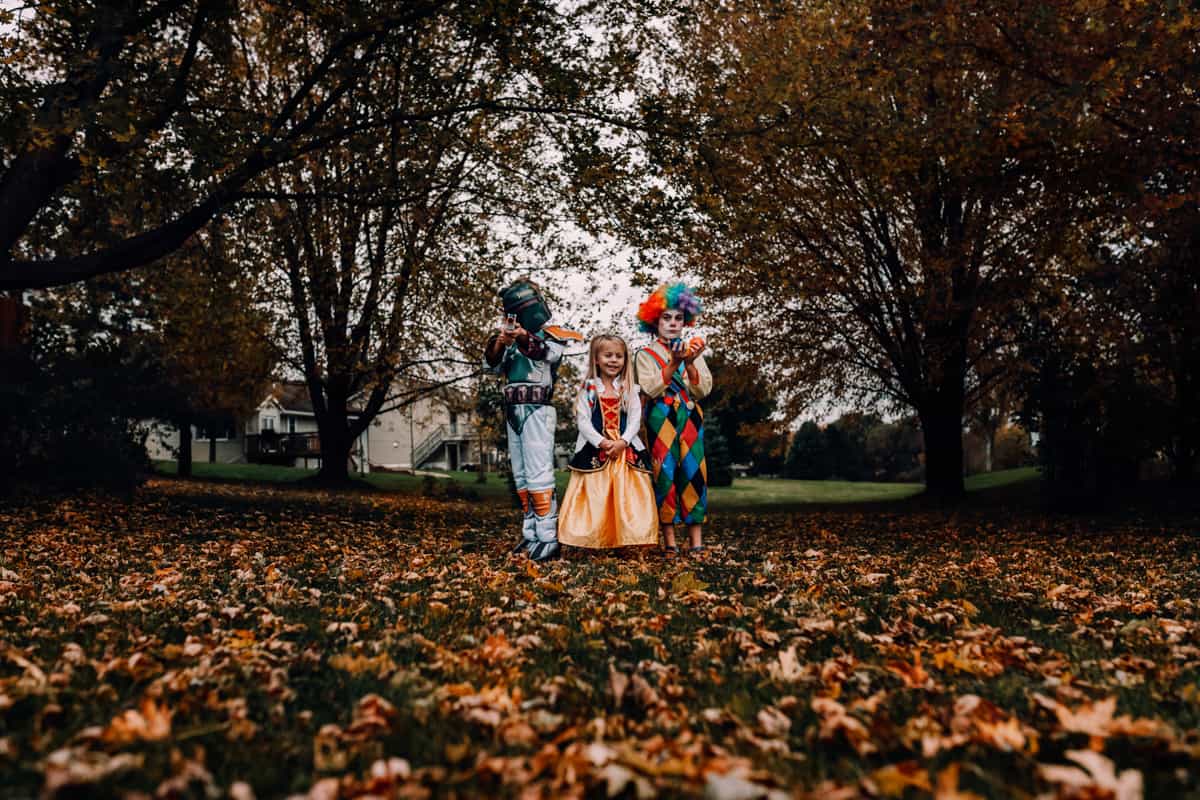
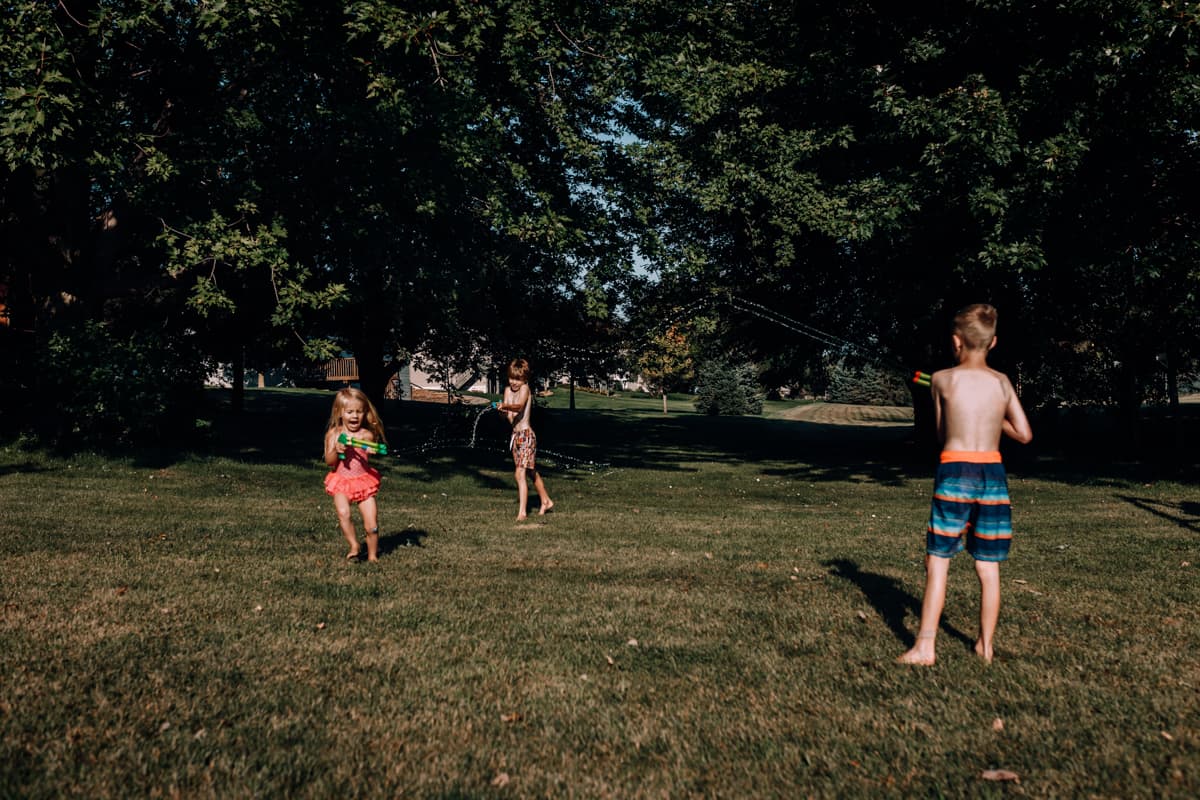

Keeping the images fresh
Other ways to keep your images fresh and unique is to incorporate action into the images and vary how you pose your children. Movement is always an easy way to add interest. Plus, your kids will most likely be more willing to jump around and play than sit still and smile.
Ask them to play a game of tag, twirl in a pretty dress, race down the road, ride their bikes or scooters, sled down a hill. It can be something as simple as playing a game of Rock, Paper, Scissors or the old game of Telephone, where they tell a secret from ear to ear. Read a book, tell a joke, dance, jump, do cartwheels. Anything that involves engaging your children will yield more natural results.
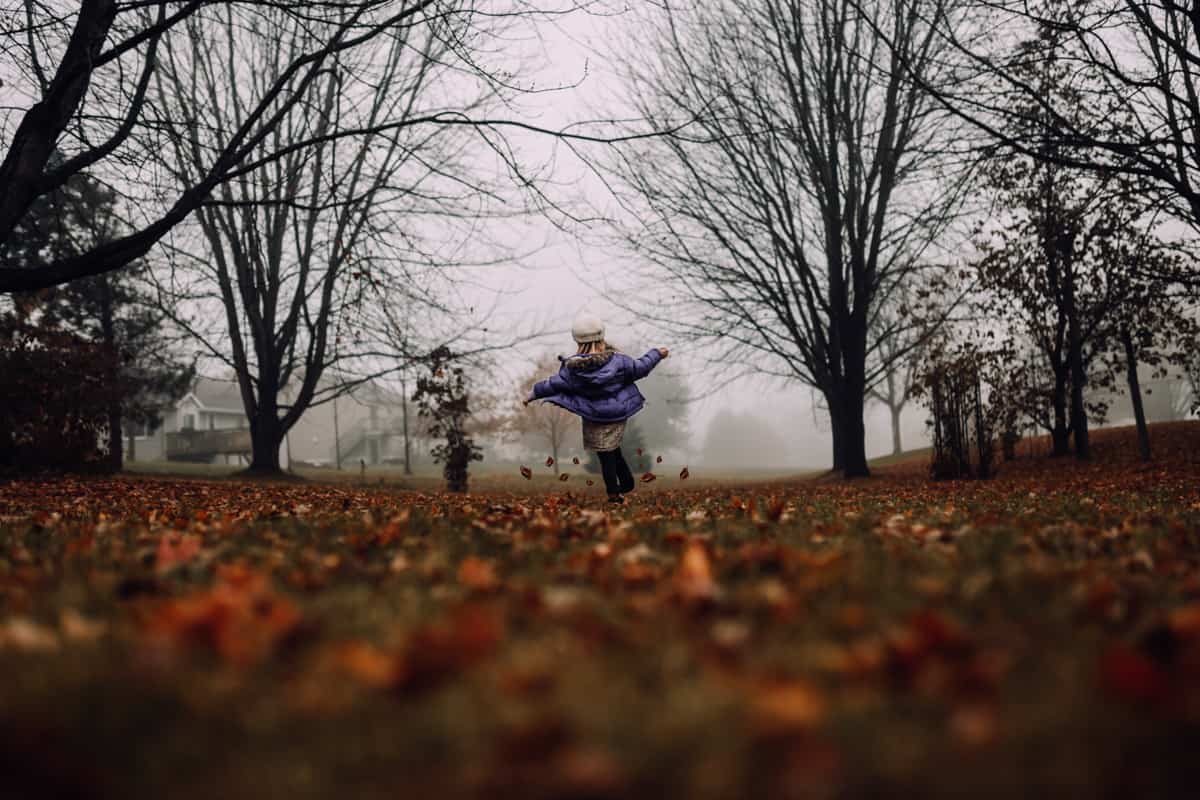
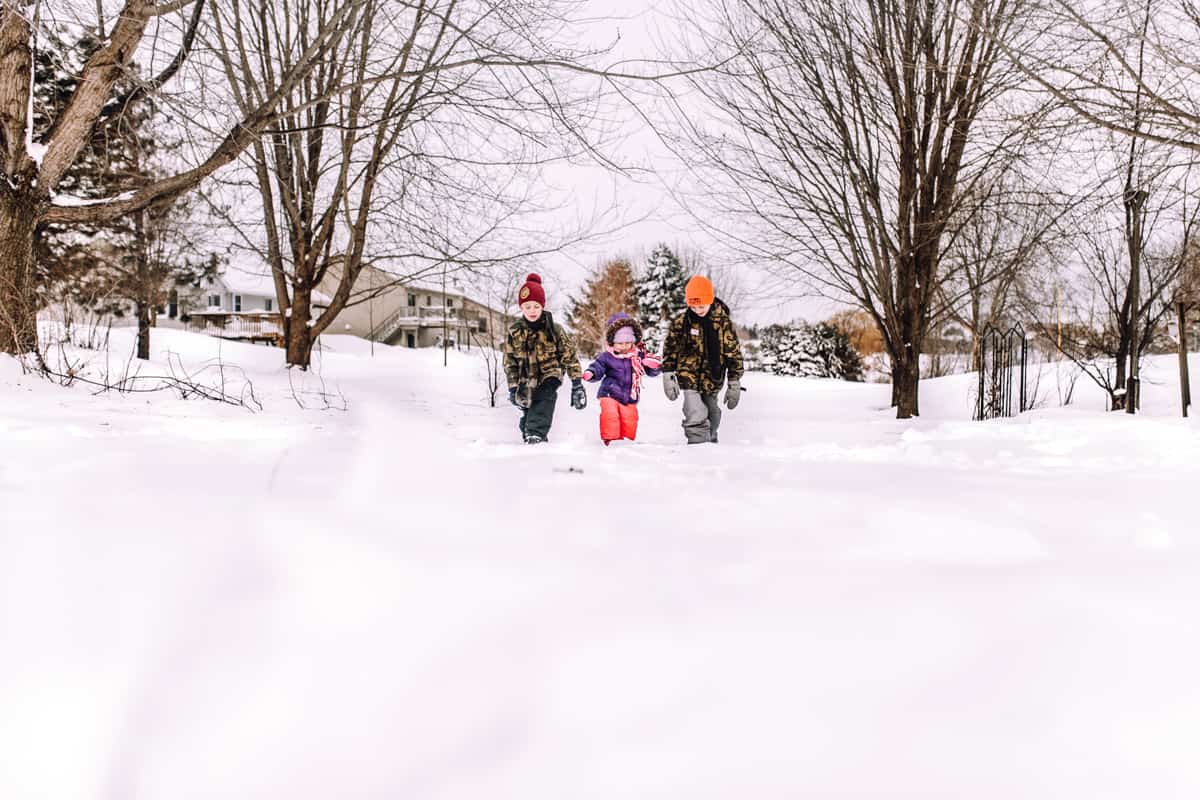
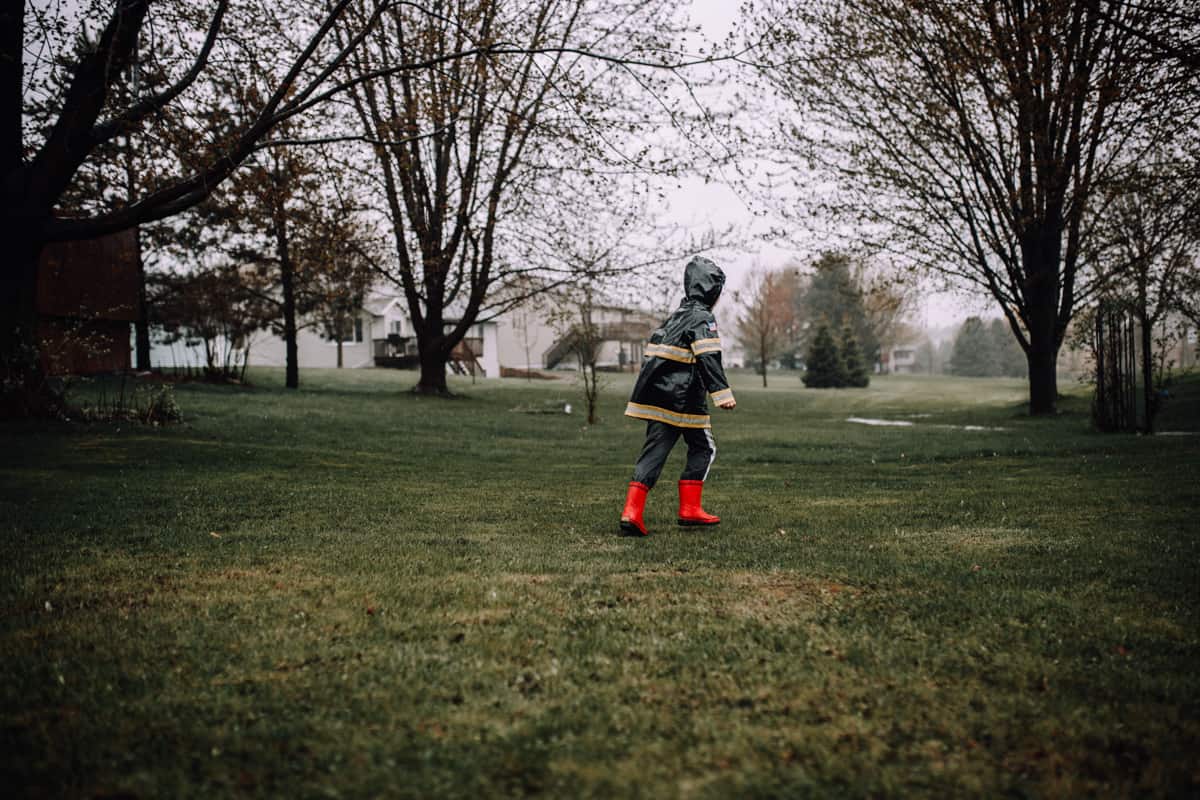
Same vantage point versus switching it up
A question you’ll want to ask yourself before you begin the project is whether you want to maintain the same point of view or vantage point for every single picture. Or, maybe you’d rather move around a bit and show a different perspective each month.
I, personally, choose one perspective and stick to it the entire year. I do this because I prefer the canvas, so to speak, to stay the same but the scenes unfolding to change within it. When I look through the images at the end of the year, I like to clearly see the seasons changing as if I’ve been standing in the same spot observing it happen before my eyes.
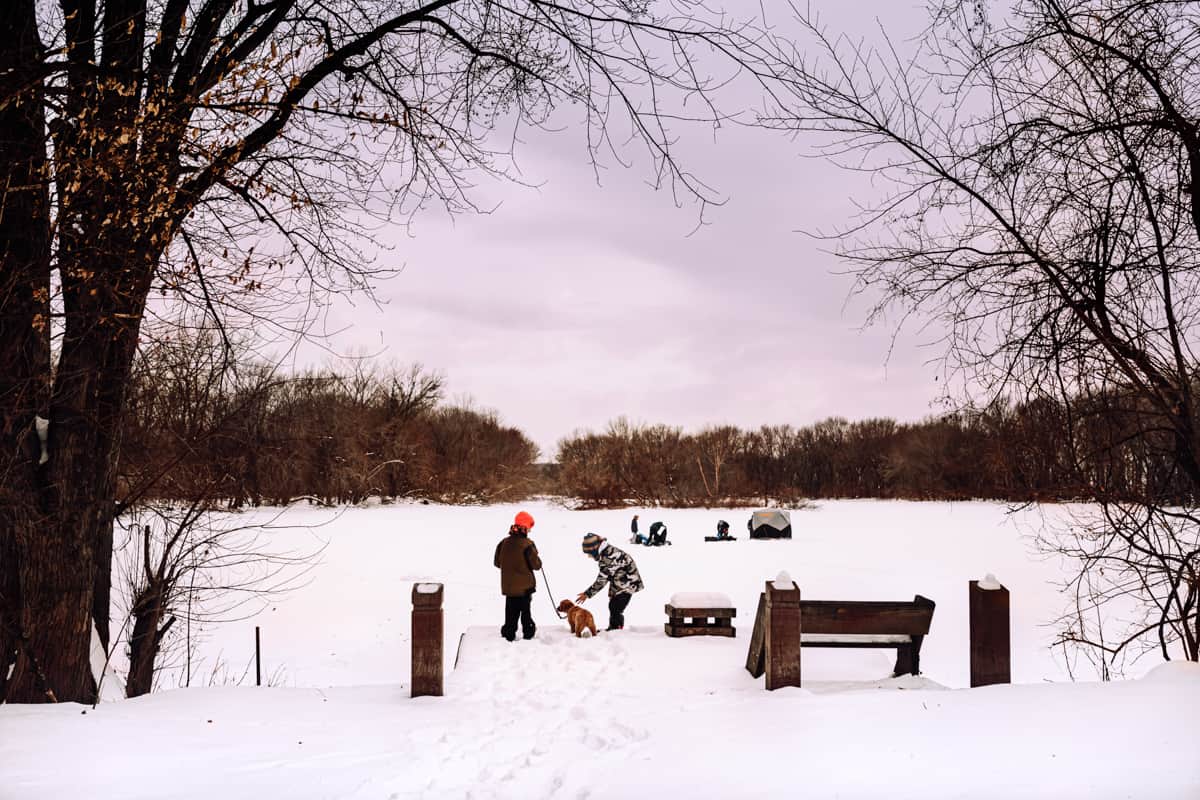
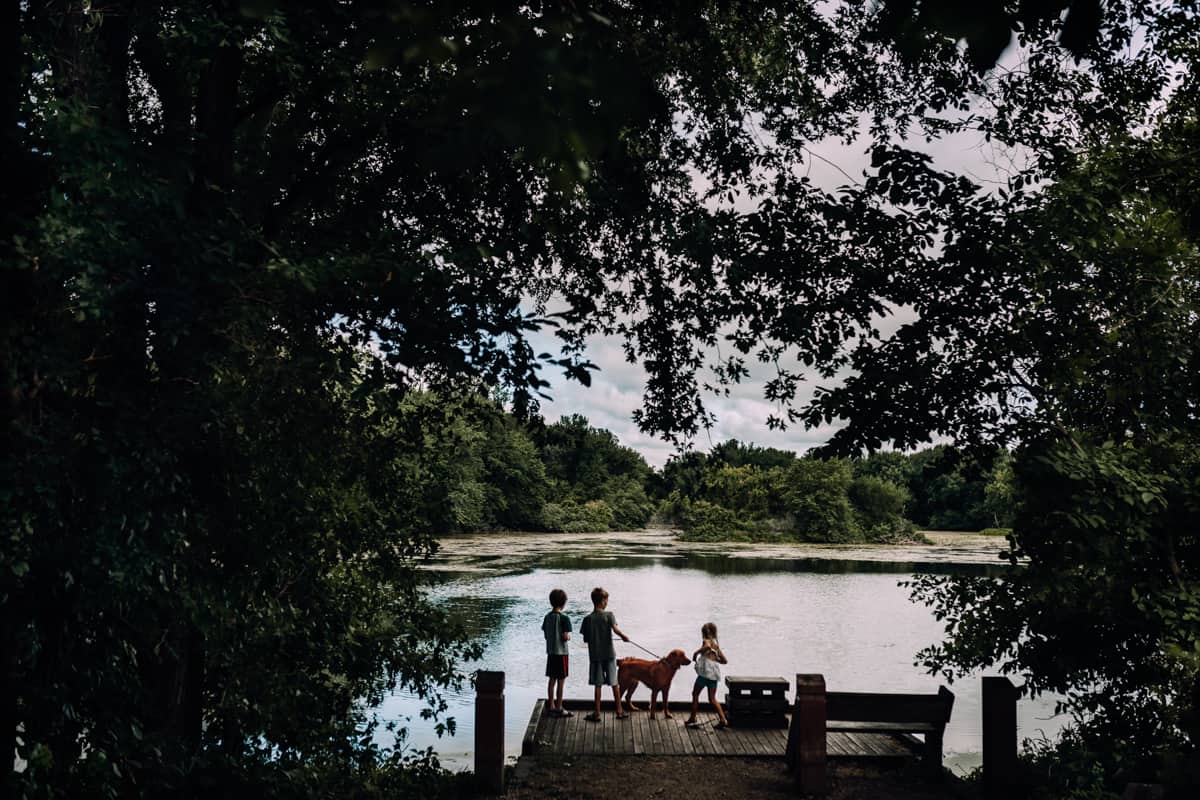
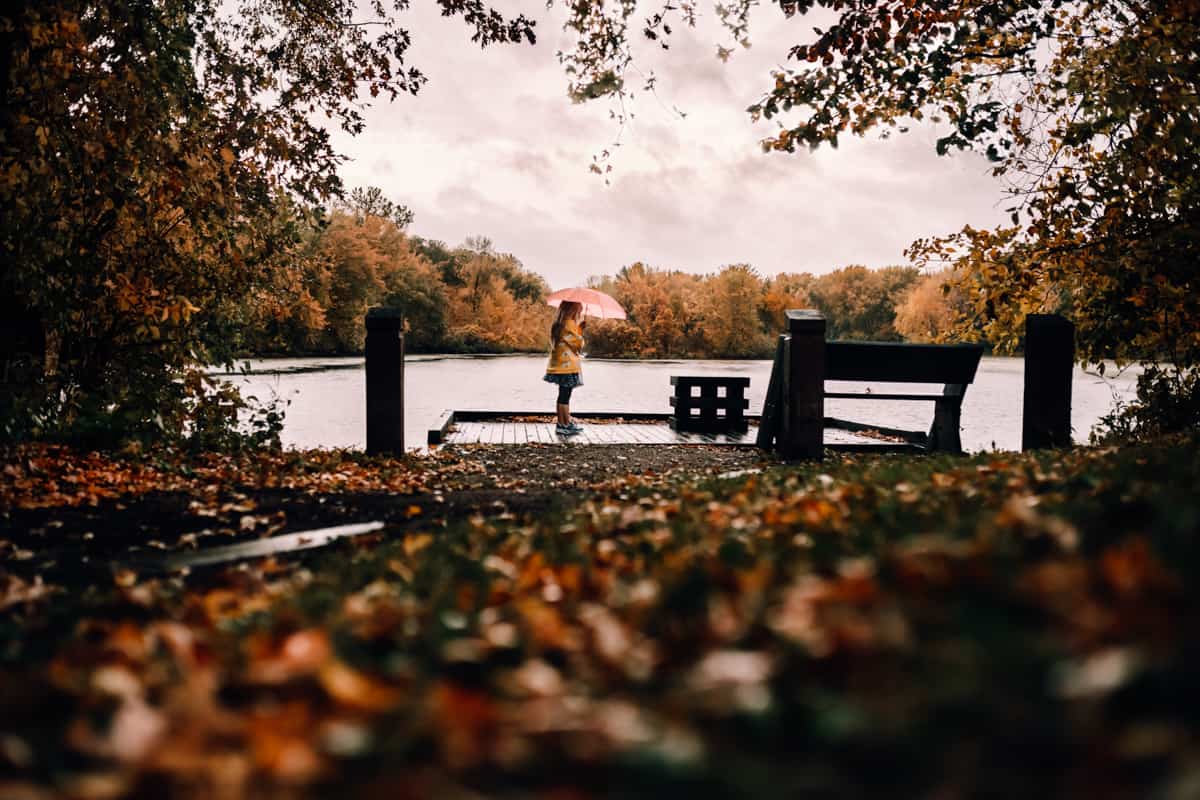
What to do when you live in an area that doesn’t change seasonally
What if you live in an area that doesn’t have noticeable seasonal changes? You can still do this project! You’ll just have to be more creative. You can rely on props and clothing and any other indicators you can dream up to identify the changing months.
One of my friends lives in Arizona and she decided to incorporate a drink in each image—hot chocolate, lemonade—to be the visual cue. Another friend used a seasonal aisle of a store. Another used her front porch and let her decorations do the talking.
If you don’t have four distinct seasons, you may have to be creative, but it’s definitely doable. Involve your children. I bet their ideas will be ten times better than your own!
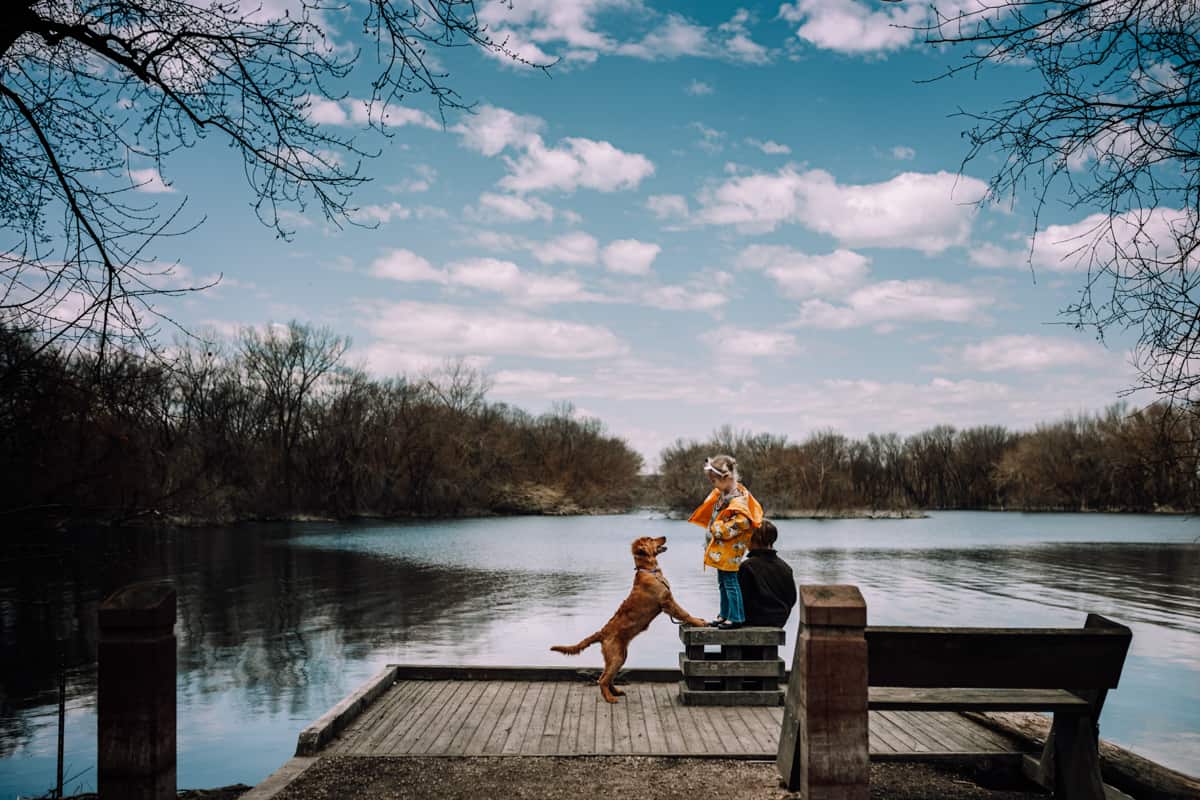
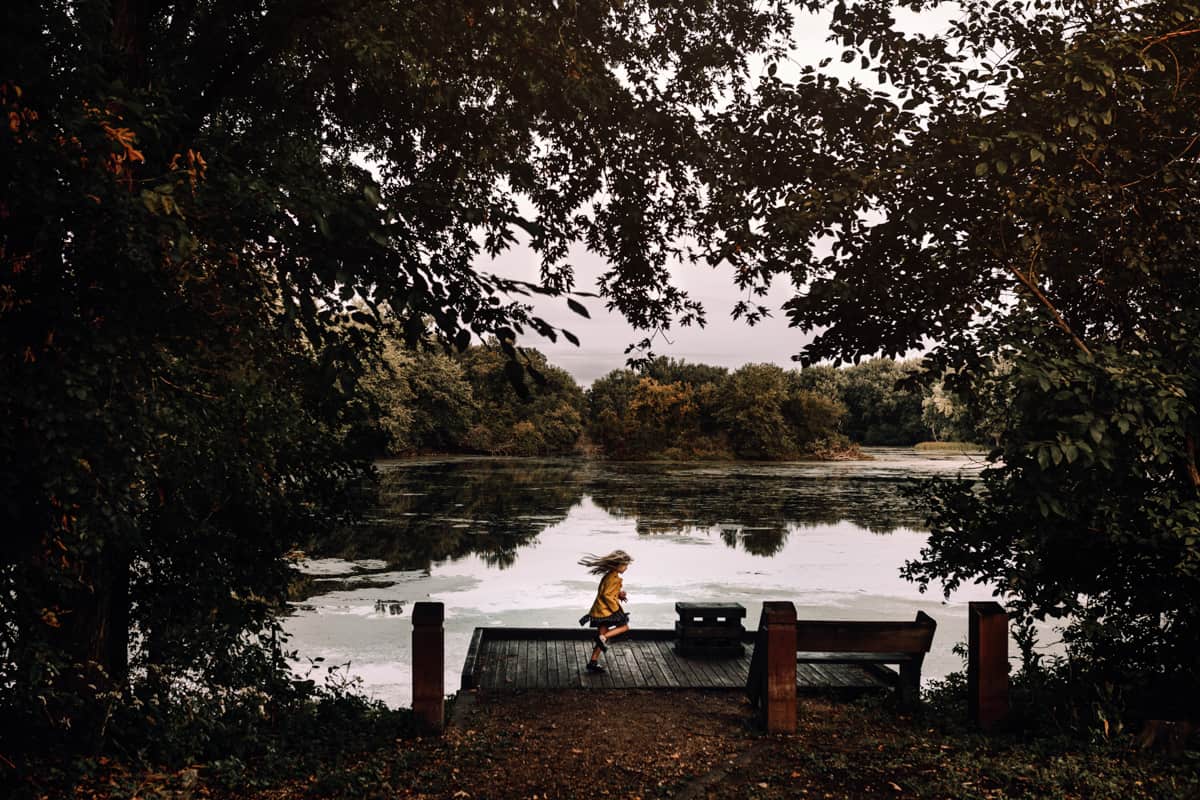
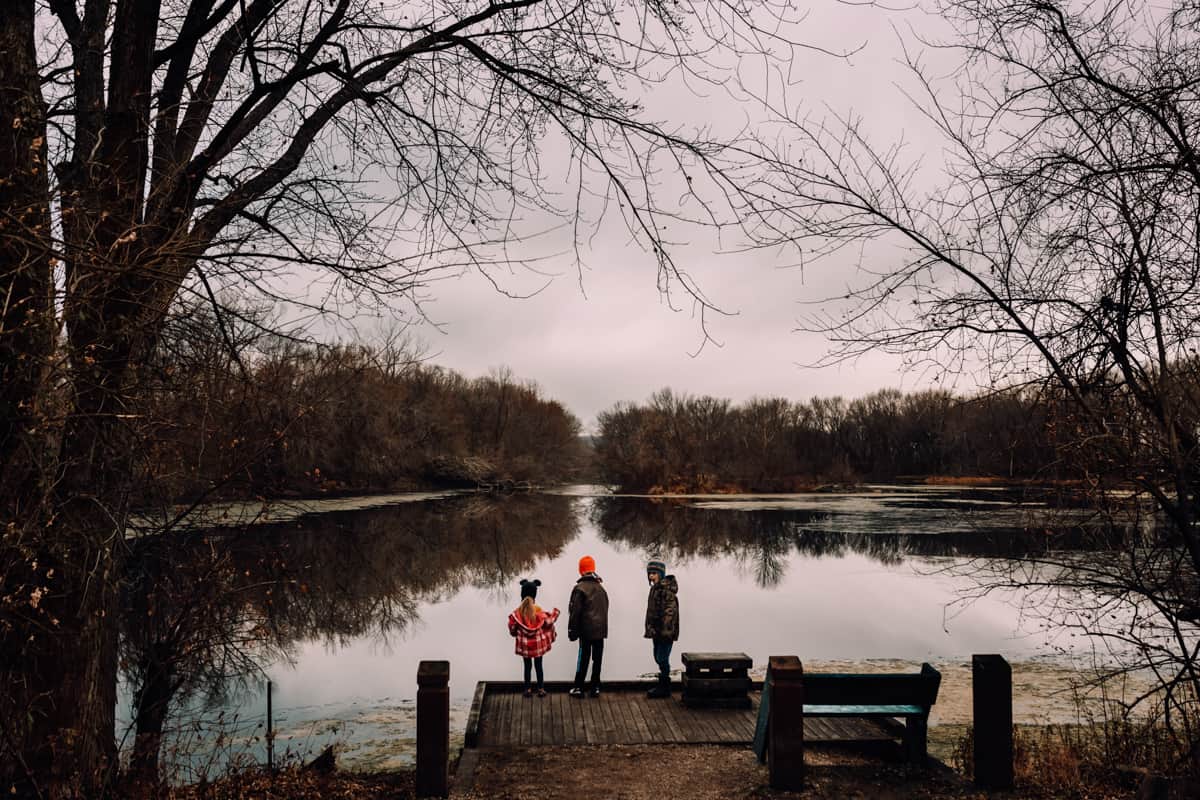
What to do with your images?
At the end of the year you’ll have 12 images that capture a year in the life of your children. You’ll see the seasons change over time, as well as watch them grow right before your eyes. So, what do you do with them now?
I like to make a calendar with them. I give the calendar as Christmas gifts to our family. It’s fun revisiting our previous year’s seasonal spot unfold each month on the calendar that hangs on our wall.
You could also make a photo book. Imagine literally flipping through the pages to see the seasons transform before your eyes. Or create a collage will all the images to display on a wall.

More photography resources
If you’re interested in more photography resources, download our FREE guide with our best tips and tricks for taking better photos of your kids’ outdoor adventures with the camera on your PHONE! From creative composition tips to our favorite editing apps, this guide includes everything you need to know to make the most out of the camera in your pocket!
What location will you choose for your seasonal spot?
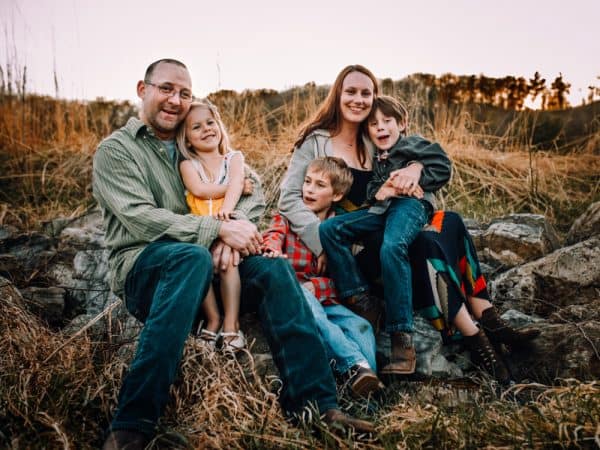
About the author
Angie is a wife and stay-at-home-mom of three wild hyenas. She resides in rural Minnesota, where there are more cows and cornfields than people. She is an introvert with a creative itch that needs to be scratched, whether it is photographing her children in their daily lives or coming up with fun ways to explore nature in their backyard. Messy hair, dirty faces, mismatched clothing, wild and free children—all these things fuel her creativity and the desire to preserve these fleeting moments. Angie and her family can be found camping, biking, and sitting around a campfire during the summer months and sledding and ice fishing in a million layers during the winter.
You can find Angie online in the following locations:
Instagram: @angie_mahlke
RWMC posts: Angie Mahlke
Comments
2 responses to “How to Successfully Complete a Seasonal Spot Photography Project”
Hi Angie,
In this world of so much information in my inbox daily, I truly look forward to your posts and read them thoroughly. Thank you for sharing your creativity and your family with your followers. I have a similar love for nature and a creative itch and love the wild aspect of raising children! I am also a photographer and create things with my hands. I wish I was closer and could come to your business workshop. Anyway, just wanted to say “Hi!” and let you know I appreciate you! Happy New Year!
Sincerely, Odessa ShekarSorry, I just realized Angie is the author of this Photo Project and Sara, you are the one I’m actually writing to about the whole RWMC site! Angie, thanks for the project idea… love it! And Sara, keep the awesome inspiration coming!
Thanks, Odessa

Leave a Reply